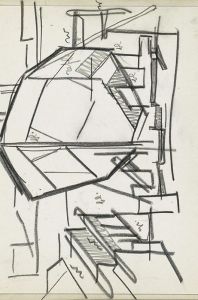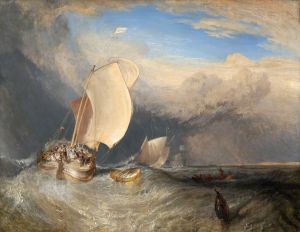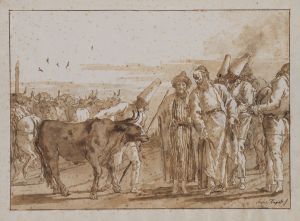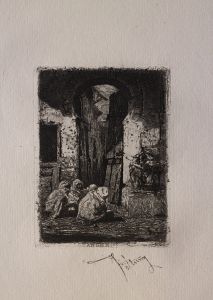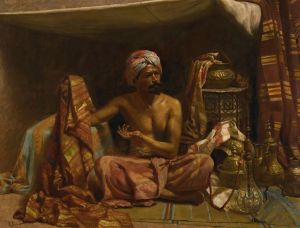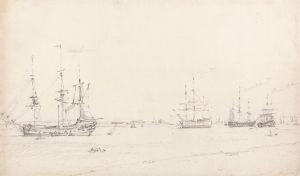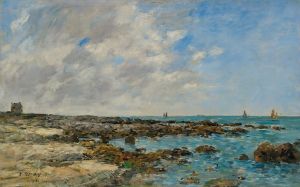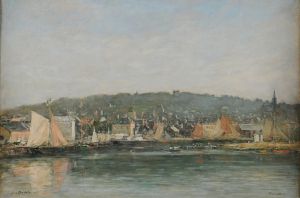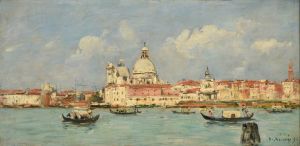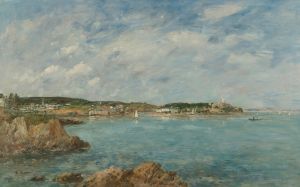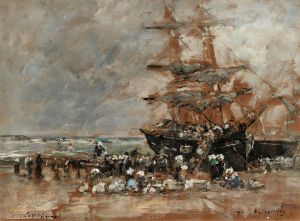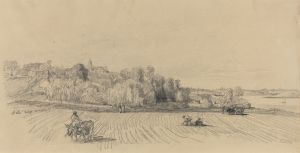
Anvers. Trois-mats à quai
A hand-painted replica of Eugène Boudin’s masterpiece Anvers. Trois-mats à quai, meticulously crafted by professional artists to capture the true essence of the original. Each piece is created with museum-quality canvas and rare mineral pigments, carefully painted by experienced artists with delicate brushstrokes and rich, layered colors to perfectly recreate the texture of the original artwork. Unlike machine-printed reproductions, this hand-painted version brings the painting to life, infused with the artist’s emotions and skill in every stroke. Whether for personal collection or home decoration, it instantly elevates the artistic atmosphere of any space.
Eugène Boudin, a prominent French painter, is widely recognized for his significant contributions to the development of Impressionism. Among his extensive body of work, "Anvers. Trois-mâts à quai" stands out as a notable piece that exemplifies his mastery in capturing the essence of maritime scenes. Painted in 1871, this artwork is a testament to Boudin's fascination with the sea and his ability to depict the interplay of light and atmosphere.
"Anvers. Trois-mâts à quai" translates to "Antwerp. Three-Masters at Quay," indicating the setting of the painting in the bustling port city of Antwerp, Belgium. During the 19th century, Antwerp was a major hub of maritime activity, and Boudin's choice of location reflects his interest in the dynamic environment of ports and harbors. The painting features three-masted ships, known as "trois-mâts" in French, docked at the quay, a common sight in such a vibrant port.
Boudin's technique in this painting is characterized by his loose brushwork and keen attention to the effects of light and weather on the scene. He was known for his ability to capture transient moments, such as the shifting clouds and the reflections on the water, which are evident in this work. The sky, a crucial element in Boudin's compositions, is rendered with a delicate touch, showcasing his skill in portraying the ever-changing atmosphere.
The composition of "Anvers. Trois-mâts à quai" is balanced and harmonious, with the ships positioned in a way that draws the viewer's eye across the canvas. Boudin's use of color is subtle yet effective, with a palette that conveys the mood of the scene. The muted tones of the ships and the quay contrast with the brighter hues of the sky and water, creating a sense of depth and space.
Boudin's influence on the Impressionist movement is well-documented, and his works, including "Anvers. Trois-mâts à quai," played a crucial role in shaping the approaches of later artists. His focus on capturing the effects of light and atmosphere can be seen in the works of artists like Claude Monet, who regarded Boudin as a mentor and an inspiration. Boudin's dedication to painting en plein air, or outdoors, was a practice that became a hallmark of the Impressionist style.
Today, "Anvers. Trois-mâts à quai" is appreciated not only for its aesthetic qualities but also for its historical significance. It provides a glimpse into the maritime life of the 19th century and reflects Boudin's deep connection to the sea. The painting is part of various collections and exhibitions, allowing audiences to experience Boudin's unique perspective on the world.
In summary, Eugène Boudin's "Anvers. Trois-mâts à quai" is a remarkable example of his ability to capture the essence of maritime scenes through his innovative use of light and color. The painting remains an important work within the context of 19th-century art and continues to be celebrated for its contribution to the Impressionist movement.






